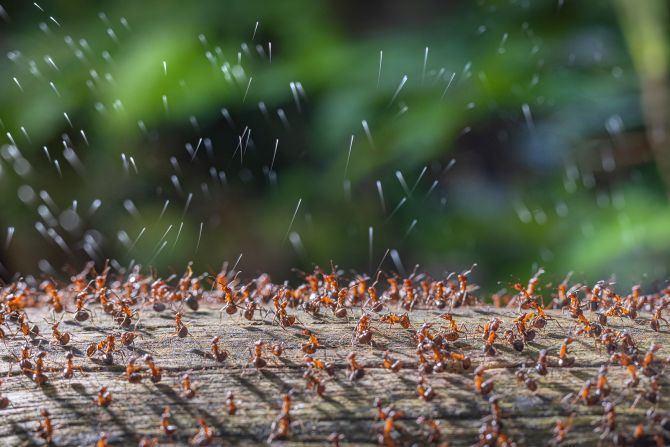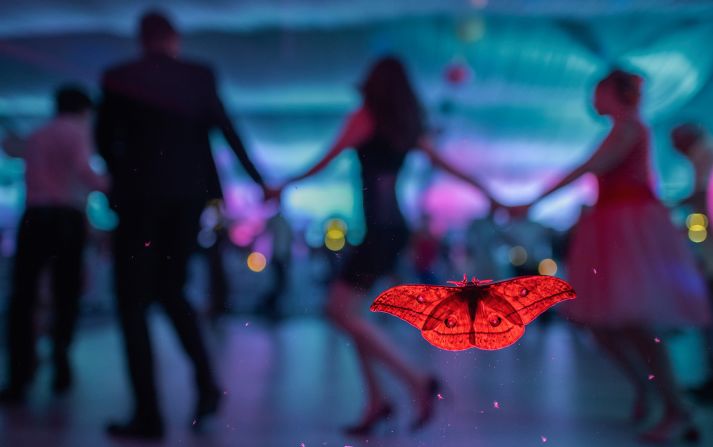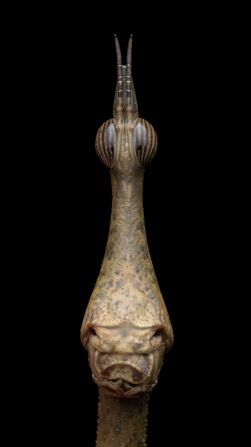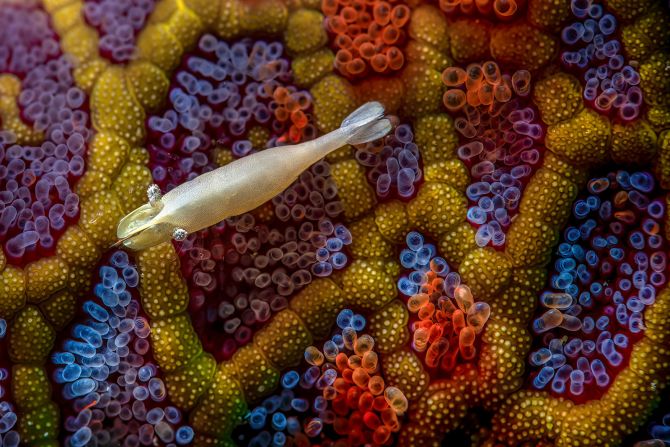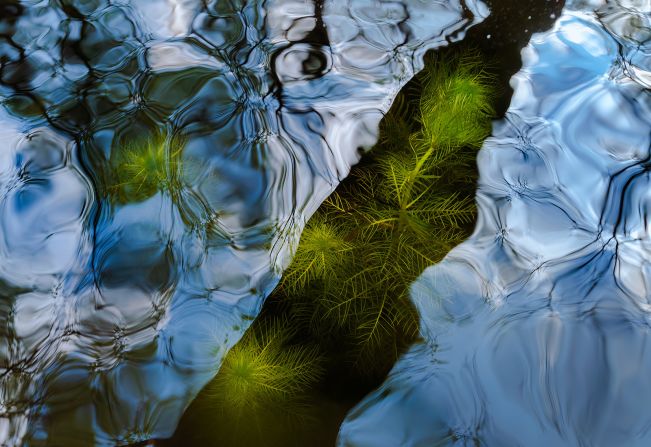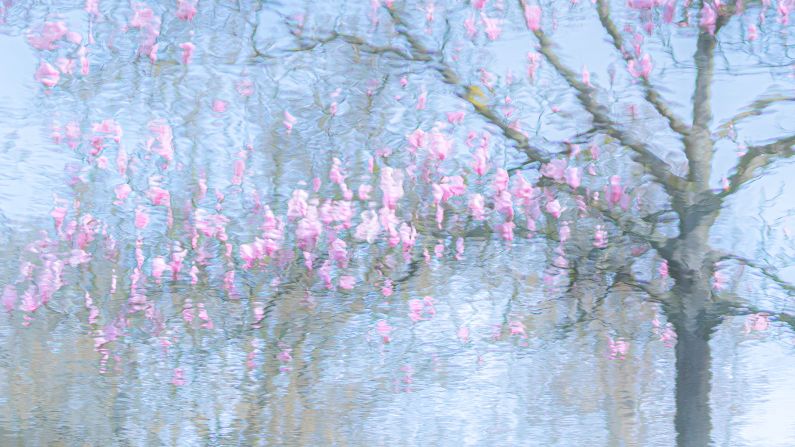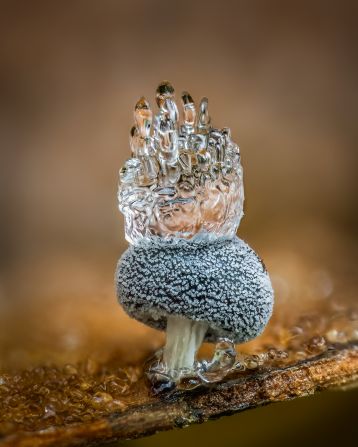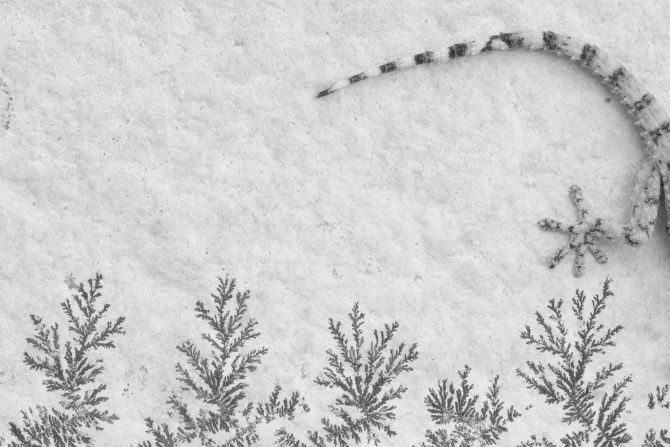Editor’s Note: Call to Earth is a CNN editorial series committed to reporting on the environmental challenges facing our planet, together with the solutions. Rolex’s Perpetual Planet Initiative has partnered with CNN to drive awareness and education around key sustainability issues and to inspire positive action.
Mesmerizing photos of ants firing acid, a shrimp floating over a rainbow-colored mosaic sea star, and a butterfly peering in at a wedding party are among the winning images of the Close-up Photographer of the Year 2023 competition.
The contest, in its fifth year, celebrates micro and macro photography, striving to show the hidden wonders of the natural world, from microscopic fungi to majestic animals. Micro is the term used for taking photos of tiny subjects that require magnification, while macro involves capturing close-up images of larger subjects.
Tracy Calder, co-founder of the competition and jury member, told CNN how the photos reveal unusual interactions between animals and plants, demonstrating how everything in the natural world is interconnected and interdependent. It “celebrates animals and behavior that people have never seen or encountered before,” she said.
This year’s grand prize went to Hungarian photographer Csaba Daróczi, for his black and white image of a Eurasian nuthatch soaring through a forest. Taken with a GoPro from inside a hollowed-out tree stump, the striking image offers a new perspective of the bird against the backdrop of outstretched trees.
The title of young close-up photographer of the year went to 17-year-old Spaniard Carlos Pérez Naval for his image of a Moorish gecko on a wall covered with pyrolusite crystals. “These magnesium minerals create stunning formations, which look just like petrified trees, but they are so small that they’re tricky to spot,” he said in a press release.
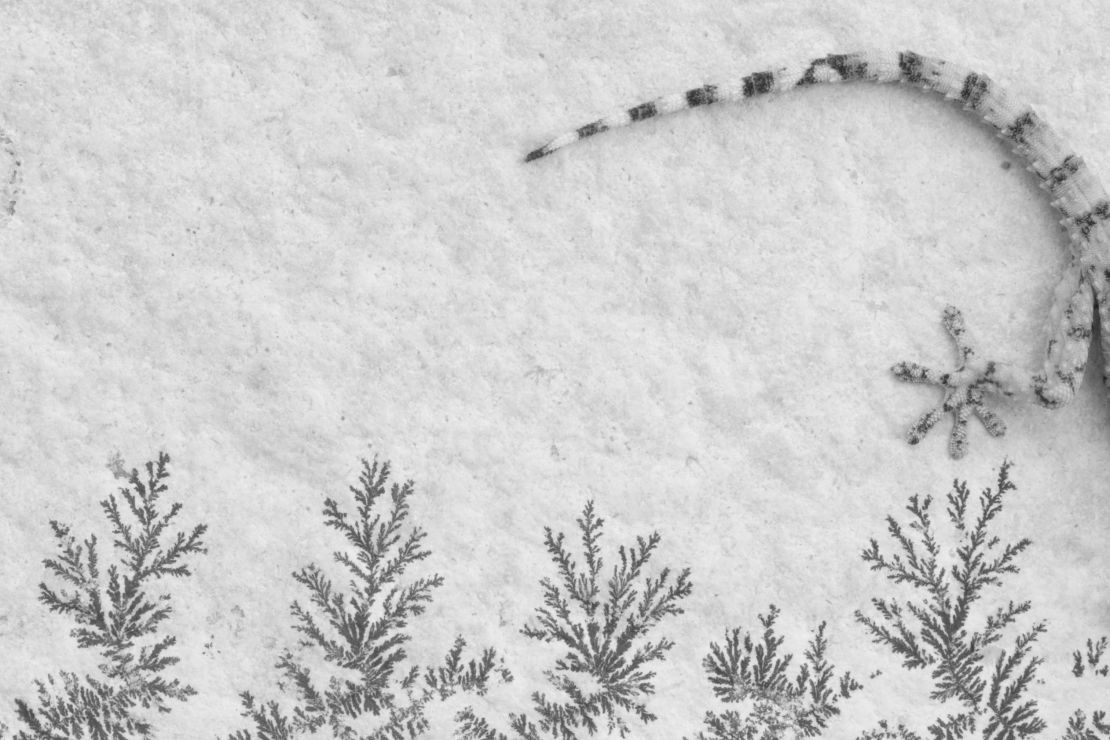
“I wanted to capture a gecko in the ‘petrified forest’ for a long time, but they only recently appeared in my village – probably carried in fruit baskets from hotter areas. Due to climate change they can now survive here,” he added.
The jury – made up of 23 photographers, scientists and naturalists – chose the winning photos for each category from a total of 12,000 entries from 67 countries. Many were taken in areas local to the photographers, showing the beauty of what can be seen in your own backyard, said Calder.
She, along with her husband Daniel, founded the competition in 2018. Both are professional photographers. While many other photo awards feature close-up categories, they believed there was a need for an entire competition dedicated to macro and micro photography.
“It’s often easier for people to get behind conservation stories featuring ‘cute’ or more obvious animals and plants: rhinos, pandas, orchids. But the lesser-known insects and plants we often consider weeds have a huge role to play in keeping everything balanced. Close-up photography often showcases these animals and plants,” she said.
“There’s also a joy in showing people things they wouldn’t be able to see without a macro lens or microscope. Many of the creatures and plants we show are all around us but are never noticed. The competition is a way for them to be noticed,” she added.

